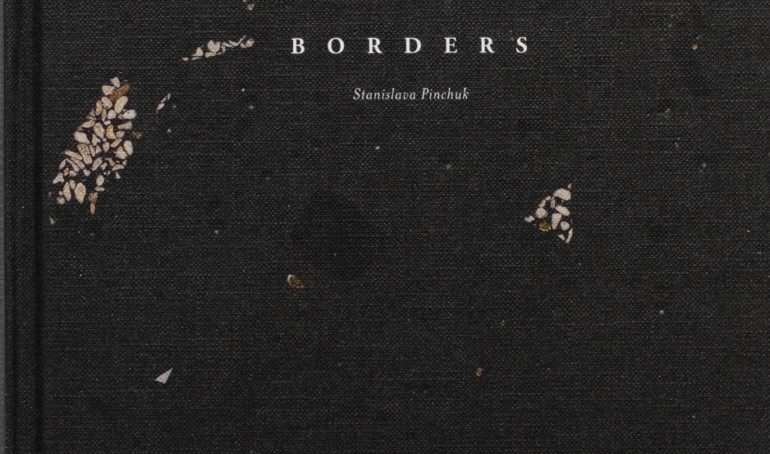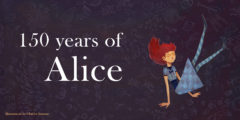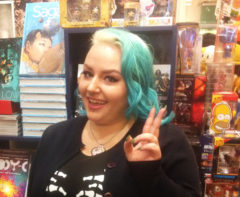Borders: Q&A with Stanislava PinchuK and Camille Vignaud

We are thrilled to be stocking Borders, the newest offering from Melbourne based artist Stanislava Pinchuk aka MISO. This beautiful hard-cover monograph published by La Chambre Graphique profiles the entire process of Stanislava’s Borders series – documenting the forced evacuation of the Calais ‘Jungle’ Migrant Camp.
We asked Stanislava and Camille Vignaud, who designed the book, to take a few moments to answer our questions about the book’s production and unique aesthetics.

Tell us a little about La Chambre Graphique? How did you and Stanislava come to meet and begin working together?
Camille: La Chambre Graphique is the graphic design studio that I founded in 2011. When I was child, every Saturday my father took me to museums, or we’d walking through Paris looking at book shops. So I think books, paper and art are in my DNA.
With La Chambre, I wanted to make books and experimental publishing objects for artists and cultural institutions. I discovered Stanislava’s work online, butI never imagined that I would work with her one day. I loved her drawings, her sensitivity and her vision for art. She posted a picture with some books she was reading, and we began to swap recommendations! It’s crazy to think about it now, so many years later, because we have a really unique and supportive friendship that fills me with so much joy!
Stanislava: I had really admired Camille’s work from a distance, and thought she would be much too big to work with me. It turned out later that she thought the same thing! I think when we finally met in Paris, we really bonded over a lot of the same sensibilities, a love of paper, texture, empty space and light. Restraint & nuance, I suppose. From there, and something like 4 books and some continents later, I feel like we’ve really become sisters.

Borders is a very unique project concerning the Calais Jungle. Talk us through your approach or intention in regards to design – what was your biggest consideration when marrying book form to this type of content?
Camille: It may be crazy, but I follow my intuition with everything – I think it’s the gateway to all my projects. I don’t speak English very well, and sometimes it can happen that I do not understand all the nuances… but I never worry about it, because in the end even if I understand them differently – sometimes we can make magic like that!
With this book, it’s true that Calais is a delicate subject, and I think it’s important that artists take up this issue. As the publisher for Stanislava’s work, I feel like it’s my duty to give it a fully adequate setting. So really, it was her works, and the politics of Calais – how I feel as a French citizen to see our government do this, that gave me the intuition for the shape of this book.
Stanislava: For me, it’s about guiding the narrative, research and writing – and really working with Camille on the design. When we start on a book, I get to Paris and we generally lay out a million books on Camille’s floor – and we pull out the books that we have sent each other in the mail that we’ve liked in the meantime. Always with a really good piece of cheese and pastries. Camille is usually my first stop from the airport, so she really knows what I’ve missed for French groceries!
We basically just touch paper stocks, pull out samples, printing techniques, wild ideas, google craftspeople. We cast the net out wide, and then pull it back as we take more consideration with what the book needs to be for us. And our financial realities. We are both such fanatic lovers of books, that working together, we always allow ourselves to do everything we want to – that our other clients or projects never would. We visit printers, as we always print in France. All this means the books are not terribly profitable, but they are truly the objects we want to leave in the world, and in museum archives. When we finish each book, we have a beautiful dinner and cocktail date at the Hotel Amour for each other, laugh loads and get a bit teary!

How long did it take for the book to come into fruition?
Camille: We have been working on the project for 2 years. It’s a long process, where you must listen to the artist, take the time of creation, of maturation. I think about it when Stanislava finishes an exhibition, even if we don’t begin the book straight away. I notice that this step back is something artists need in front of their works. We live in a society and industry that no longer leaves space for needed time, even though it’s so necessary for the creative process ( – and life in general! ). I like to think it’s like a long breath, so I let myself be carried away by the rhythm of Stanislava.
Stanislava: For me, I suppose it’s even a much longer process – in the research and making of the work, which I believe was a good 2 years on this project, before the book even began formulating! Camille is right – as an artist, and a researcher too – you are always a little too close and deep to the work at first!

For us photobook nerds, the detailing of the book is both delicious and considered – gold embossing on the cover, gatefolds, use of metallic inks… did you always know that you wanted to include these elements or did they result in response to the project? Are there any specific design elements that you’re particularly proud of?
Stanislava: This one is for Camille! When we are apart, we have these hilarious video calls, where she’s in a foundry, trying to show me the difference between two white paper stocks! Through the cackle, I just always yell “I TRUST YOU!” in our weird Franglais, never see a print proof – and it turns out beautiful. I love the surprise now, honestly!
Camille: Oh my god, the video calls… really good memories of every book!
I have an incubation and research period after we start talking about a project, and most of the time that magic happens in my dreams or when I’m in the shower. I see the book, not as a whole, but I can usually see the cover, or some pages. Feeling and intuition, always. Also, I take care to never be too rigid with what I imagine, because chance is important in my work process. I can have an idea that keeps me going and finally find out that it’s not right. I like this process because I am never disappointed. And I can always save that idea for our next project, or something else.

Borders is a limited edition of 350 and is packaged in a sealed pull-tear box. Was this decision purely aesthetic or is there an underlying concept behind the physicality of having the viewer open the book in this manner?
Stanislava: We’ve been having a lot of conversations recently, as friends – with Camille as a young mother, and especially with me being back in Australia this summer, with the catastrophic fires – about the future of the planet. We’ve both been really conscious to not use plastics, even in packing – so building the protective card net to specs, was a really beautiful and protective home for the book.
Camille: This envelope allowed us to protect the book, and make sure even our stockists wouldn’t need to use a material like plastic to package it. But I also think the experience of sitting in front of the book, to unwrap it and tear it, is to also to lead the reader to enter in the ‘Jungle’ of Calais, and to actively engage, touch and understand this ground.

> See more on the book’s creation, if you like, on Flos Milano.




Write a comment